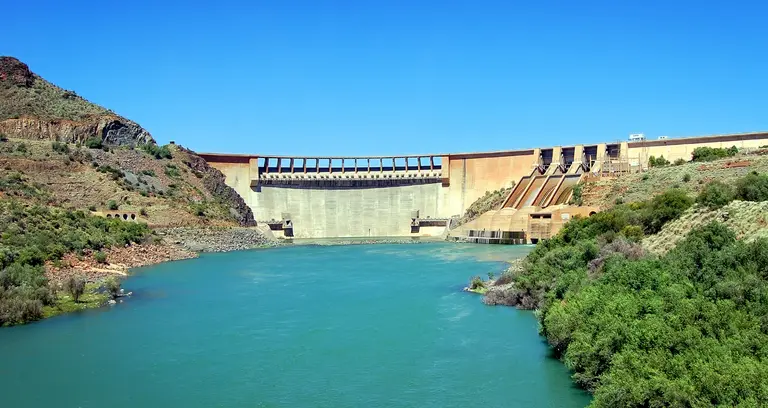Palo Alto, CA— Africa is home to both the world’s longest and deepest rivers in the Nile and Congo. These pristine environments are less fragmented by human activity than rivers in Europe and North America, making them some of the most biodiverse ecosystems on the planet. But this delicate balance could be in peril according to a new study from an international team including Carnegie Science’s Angelo Carlino.
African rivers represent the continent’s largest renewable power source, contributing to between 15 and 20 percent of the total electricity consumed. However, there are environmental tradeoffs.

New work led by Carnegie Science’s Angelo Carlino—in collaboration with researchers at the Environmental Intelligence Lab at Politecnico di Milano and the Natural Capital Project at Stanford University—took a holistic perspective on the issue of African hydropower, connecting energy, socioeconomic development, conservation, and climate change mitigation.
To accomplish this, the researchers built a sophisticated model to explore the sensitivity of these tradeoffs, which could support planning for dam projects in a way that is both beneficial to humans and less detrimental to nature.
Their findings indicate that while some hydropower projects can improve the energy outlook in a region, they can also substantially alter the river ecosystems on which they are built. Furthermore, emissions of methane and other greenhouse gases from the reservoirs themselves will increasingly be a factor in carbon accounting as climate change mitigation efforts advance.
“We know that between 40 percent and 68 percent of proposed hydropower capacity is economically viable in Africa. However, average river fragmentation and reservoir emissions would increase by around 50 percent and 30 percent, respectively,” explained Carlino, the first author of the team’s recently published paper in Nature Sustainability. “How much of this proposed hydropower can be replaced with other power sources to reduce these impacts?”
The researchers found that by integrating technological advancements, economic concerns, and environmental objectives in energy planning, African nations can shelve less desirable hydropower projects and make up the difference with other renewables at virtually no additional cost.
“We found that reservoir emissions and river fragmentation impacts can be reduced by at least 50 percent with a negligible impact on electricity prices and total costs,” said co-author Rafael Schmitt, lead scientist at the Natural Capital Project.
“Artificial intelligence can be used to search and find the solutions minimizing conflicts between energy, ecosystem, and climatic objectives,” added the Natural Capital Project’s research assistant Anna Clark, a co-author on the study.
A variety of new solutions are emerging to reduce the environmental impacts of hydroelectricity, such as multi-objective dam planning and floating solar panels on existing reservoirs, explained Andrea Castelletti, who leads of the Environmental Intelligence Lab. “Our ultimate objective is to connect continental energy and climate policy to local infrastructure design and operation,” he concluded.
Looking ahead, approaches like the one adopted in this work can be employed to support multiple social, economic, and environmental objectives. Addressing climate change in conjunction with other concerns might prove crucial to improve the resilience and sustainability of mitigation strategies.
